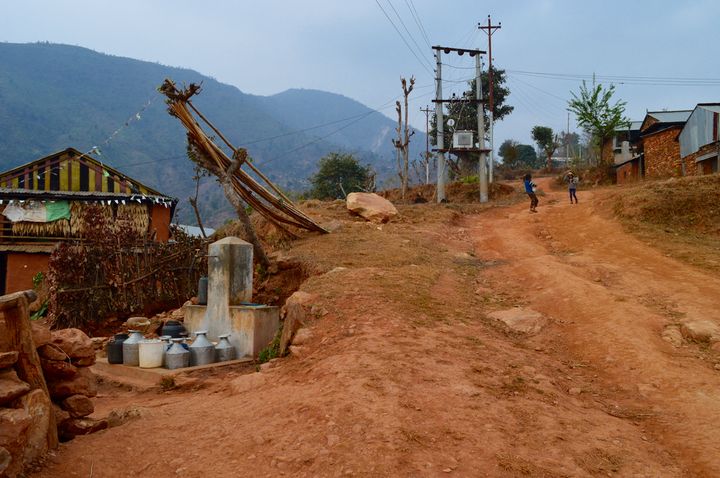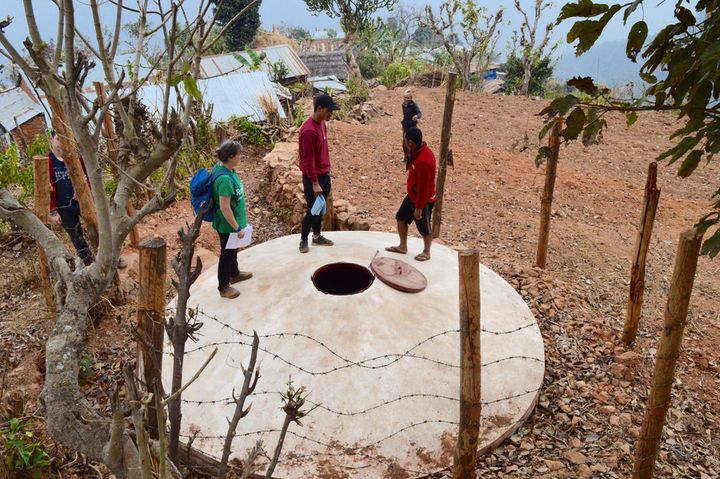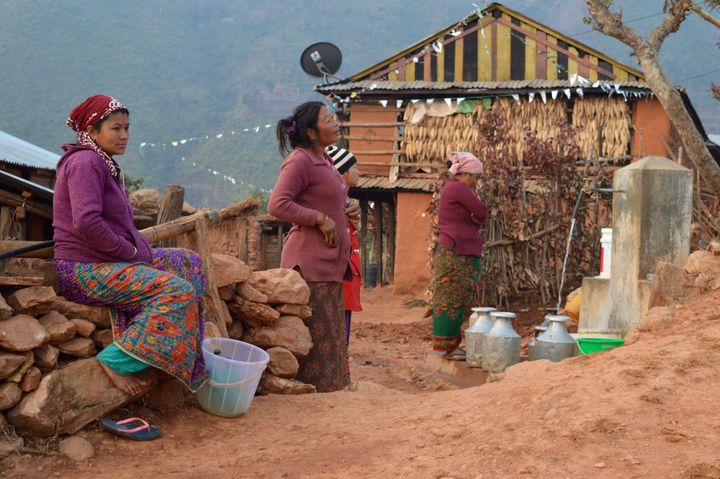
The water has not come on again today in Rampur. As the sun rises in this mountain village, murmurs of “pani chaina” – “no water” – drift across the community. Women prepare empty drinks bottles and tin buckets to bring on their walk for water, accompanied by children carrying small jerry cans on their backs like school bags.
Rampur is a rural community in the Gorkha region of Nepal. At 1400 metres above sea level, water sources are rarely found here and the community have to source water from outside the village boundaries. In the past, water has been piped from a natural water source to tanks which are installed in the community. But since the water source and tanks were damaged in the 2015 earthquake, water access has been much less reliable.
On mornings like this, when the taps run dry, an unspoken plan kicks into action. Women walk to neighbouring communities to collect water and workers leave their daily jobs to travel to the river. As a result, children are late to school (or miss it altogether) and workers miss out on their wages for the day. But people in the community have faced this shortage before and have developed strategies to cope with it. Some households dip into emergency water barrels which they keep in their homes, and the community work together to support each other and ensure everyone has water for the day.
As a volunteer for Raleigh International in Rampur, experiencing this water scarcity first-hand has been a real wake up call. Our team is here to support the community in constructing a new water tank which will improve water access in the community. The timing of the project couldn’t feel more apt, as this morning’s water shortage is down to the failure of an 18,000 litre water tank which serves the 70 households in Rampur. The Water User Committee – a community run group dedicated to managing the water supply – discovered the tank was blocked, a common occurrence since it was damaged in the earthquake three years ago.

As we walk to the worksite to work on our project, the hardship of living with water scarcity hits home. When the water stops flowing, the things that we’re used to doing in everyday life is limited and difficult. Morning washes are impractical, you ration the water you need to brush your teeth, and you feel an acute sense of panic as jerry cans full of drinking water gradually become lighter. It has an impact on your sleeping as you prepare to wake up early the next morning to walk to the natural water source (only 15 minutes downhill, but an exhausting climb back up).
Being in Rampur on a day like today makes it hard not to reflect on the global scale of the water crisis. According to the UN, 1.9billion people face water scarcity every day. Governments around the world have pledged to provide global water access as part of the Sustainable Development Goals, but in being here it is clear that progress isn’t happening quick enough. In Nepal, a whole three years after the earthquake, there are still too many people facing water stress every day.
In Rampur, after two days of water shortage, water starts to flow from the taps once again. Women queue at the public tap stands early in the morning to fill their buckets for the day. It provides brief relief, but it’s an inevitability that the water will go off again. When the dry season hits in April, water access is expected to become much more difficult for everyone living here.

This World Water Day, we as volunteers are doing what we can to improve water access in Rampur. But it’s going to take more than our team to solve this issue globally. If we want to tackle water scarcity, we all need to be involved. So if you can’t be here with us in Rampur, then get behind water in other ways. Put pressure on the government to commit to ensuring water access for everyone everywhere. Support charities and NGOs working to improve water infrastructure internationally. And make sure that every time you feel that splash of water, you don’t take it for granted. Because in places like Rampur, every drop counts.
